Every year, the Advertising Specialties Institute reminds us of the power of promotional products with its “Ad Impressions Study.” The results are always intriguing, and this year is no exception. Here are some highlights and the overall takeaways you don’t want to miss.
1. The popularity of promotional products spans all demographic groups. When consumers were surveyed about their favorite types of advertising, promotional products came out on top across all categories — gender, age, and geographic location. Here’s how the channels ranked overall.
- Promotional products
- Radio
- Newspaper
- Television
- Magazine
- Mobile
- Internet
As expected, these rankings did vary by category. Regardless of age category, radio and newspaper consistently came in second and third. Among those 18–24, however, their second favorite was mobile.
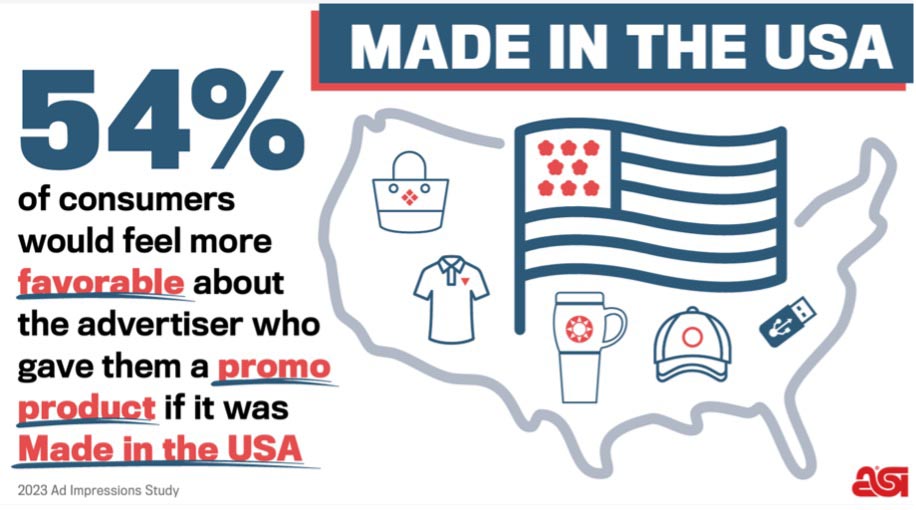
2. “Made in the USA” still rules, especially among women. More than half of respondents (54%) said they would feel more favorably toward an advertiser that gave them a promotional product made in the USA. If you associate “Made in the USA” as primarily male thing, you’d be wrong. More women (56%) said they would favor an advertiser who gave them a promotional product Made in the USA than men (52%) did.
As one might expect, the older the consumer, the more likely they are to feel this way, with 67% of respondents 65+ feeling more positively toward an advertiser that gave them products Made in the USA. The exception is Millennials. Of the six demographic breakouts studied, this group had the lowest affinity with Made in the USA, with 35% giving this answer.
Does this affinity vary by geography? Not really. The percentage of respondents saying they would favor an advertiser that gave them a promotional product made in the USA ranged only by three percentage points.
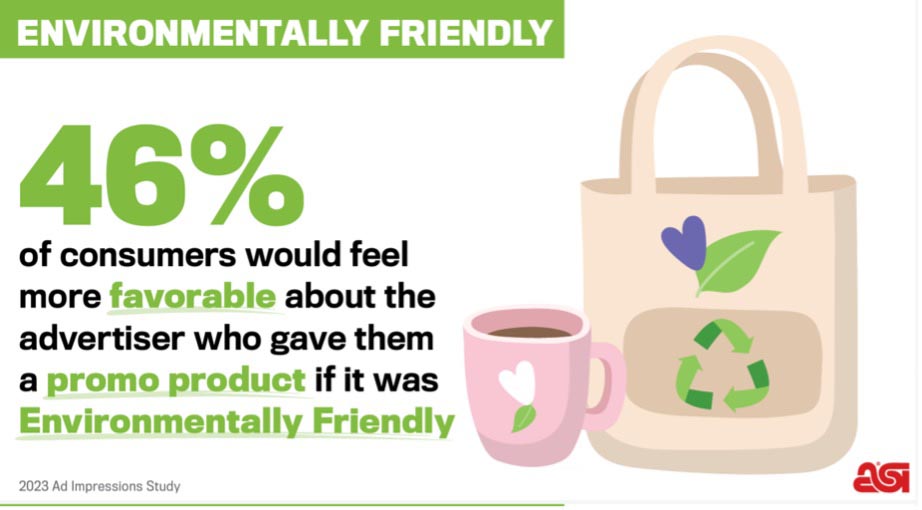
3. Consumers love environmentally friendly products. Nearly half (46%) of consumers say they would feel more favorable toward an advertiser who gave them a promotional product that was environmentally friendly. This rose to 49% of women (compared to 42% of men).
Younger consumers 18–24 (45%) feel more favorably about an advertiser giving them environmentally friendly swag than 25–34-year-olds, but they are not the demographic group with the most affinity for environmentally friendly products. This went to the oldest generations—49% of those in both the 55–64 and 65+ age brackets. As with Made in the USA, the 25–34-year-olds were the biggest poo-poo-ers. They had the lowest affinity with environmentally friendly swag, with only 39% giving this answer.
Does this change by region? You bet. Only 38% of consumers in the Northeast said they would feel more favorable about the advertiser if the promotional product was environmentally friendly.
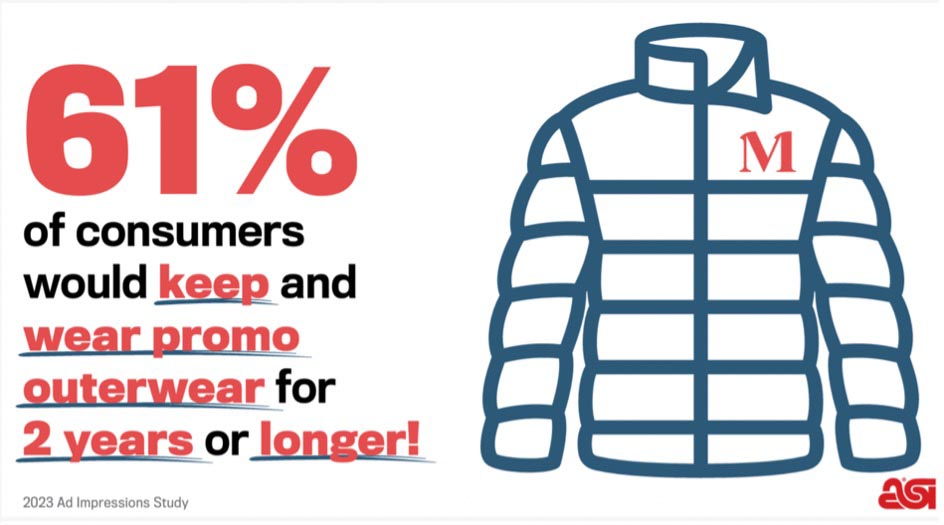
4. Branded swag has a shelf life. If your goal is to keep your clients’ brand in front of the owner of the product for the longest period of time, it matters which promotional products you choose. Sixty-one percent (61%) of consumers would keep and wear promo outerwear for two years or longer. Compare this to only 51% of consumers saying they would keep and use a promo power bank for two years or longer. (Really, people?)
But if you’re looking for something easier on the wallet, try drinkware—63% say would keep and use promo drinkware for one year or longer and 62% would keep and use a promo calendar for one year or longer. But make that calendar something super special. Every advertiser has the same idea, and consumers can only have so many calendars.
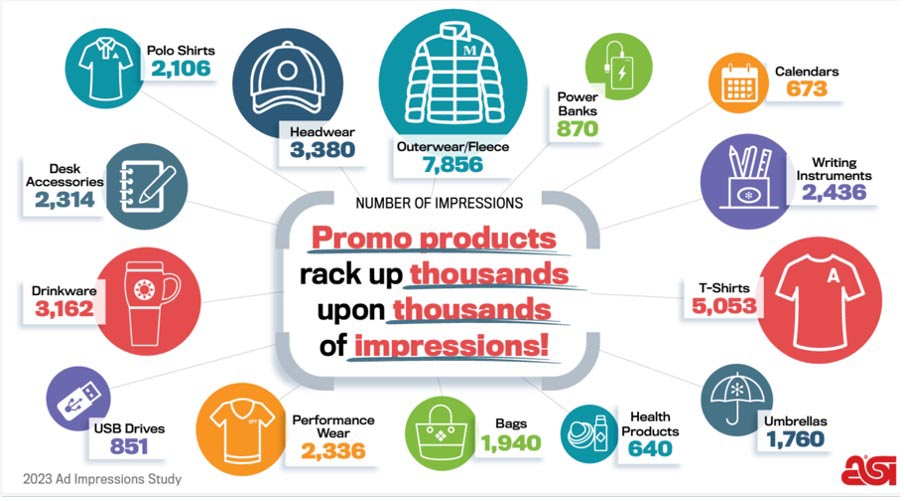
5. Impressions can vary widely. If your goal isn’t to keep your brand top of mind with individual consumers but rather to expose as many people to your brand as possible, then you want to look at the number of impressions each branded promotional product receives over its lifetime.
Here are the top five:
- Outerwear/fleece (7,856 impressions)
- T-shirts (5,053 impressions)
- Headwear (3,380 impressions)
- Drinkware (3,162 impressions)
- Performancewear (2,336 impressions)
Wearables are the way to go. They may cost more, but they get the most eyeballs.
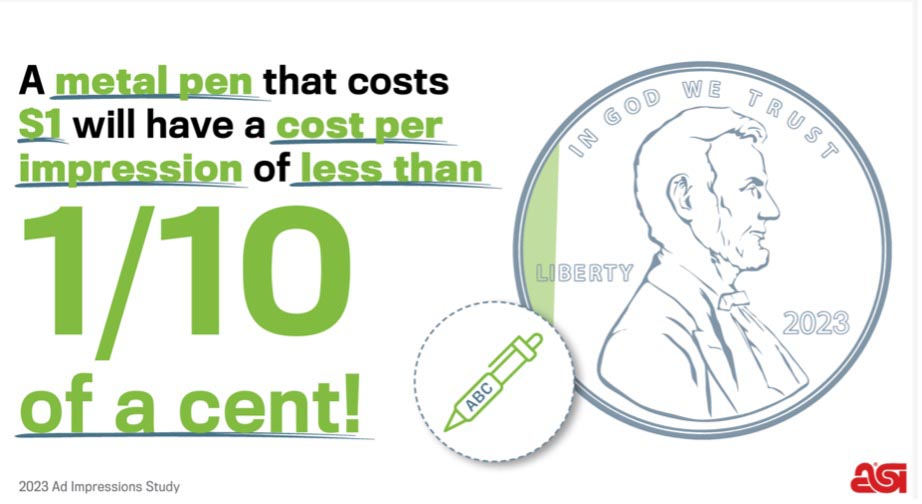
6. Cost per impression mixes things up. If your goal is to spend your money on the lowest cost per impression, however, then the survey offers that information, too. Ever wonder why so many people are walking around with branded pens and tote bags? Both come in at the lowest cost per impression at 1/10 of a cent. Compare this to travel mugs (1/3 of a cent), branded polos (1 cent), and 12-month wall calendars at 1.5 cents.
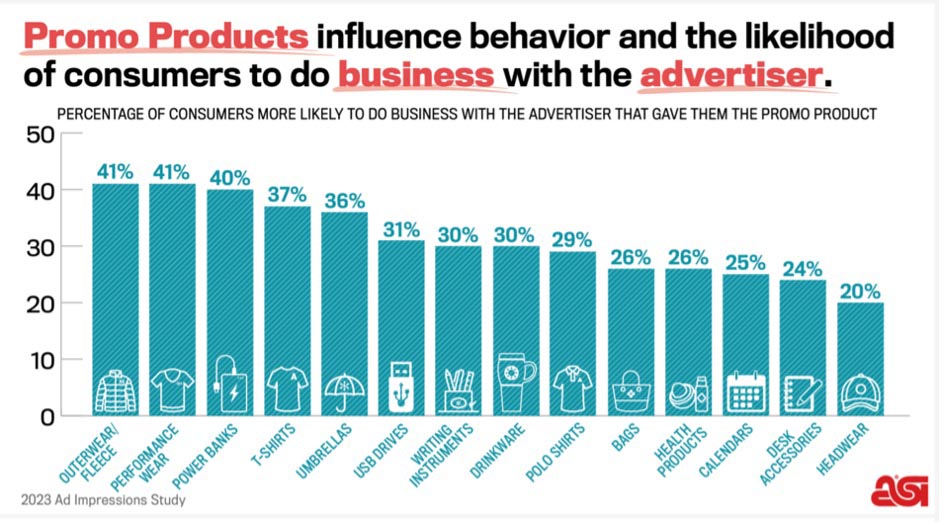
7. Wearables have the highest influence impact. Wearables may be the most expensive of the branded swag, but they have a big payoff, too. Forty-one percent (41%) of consumers say that receiving one of these promotional products influences their behavior and makes them more likely to do business with the advertiser.
Interestingly, one of the most popular branded swags, headwear, had the lowest impact on future purchase behavior—20%. And branded power banks, which have unimpressive numbers in other categories, fare very well in this one. Forty percent (40%) of consumers say they are more likely to do business with the advertiser who gave them a branded power bank. So the impressions numbers are low, the costs are high, but the pay-off from branded power banks can be high, too—if you get them into the right hands.
This level of influence will vary based on the audience, however. The most influential products among men? Outerwear, performance wear, polo shifts, writing instruments, and umbrellas. For women, outerwear still comes out on top, but this is followed by health and safety products, performance wear, branded totes, and drinkware. Health and safety (products we don’t hear much about) also came in number two for consumers 18–24 years old and 35–44 years old. Want to influence those 55–64? Try umbrellas! They came in number two in this group (behind outerwear, which was first in all age groups). Marketing to people in Alaska, however? The most influential are health and safety products, followed by drinkware.
Got Swag? Choose Carefully
The overall takeaway? Branded promotional products are powerful marketing tools, with significant influencing power, but select carefully. Choose based on what best complements your products and services, but other factors should play into the decision, as well. Who are you trying to influence? What is the goal of the campaign (brand affinity? brand awareness? sales?) If sales, which products are most likely to influence your target audience to buy? All of these things matter in the selection process. Especially if you are looking for the most influential products and are marketing regionally, where much of the variation exists.
So when purchasing promotional products, it’s important to look at the various metrics for the audience that you are targeting. Just because the guy in the trade show booth next to you is having great success with one type of branded swag doesn’t mean it’s the right choice for you.
Download the entire study here.










Discussion
Join the discussion Sign In or Become a Member, doing so is simple and free